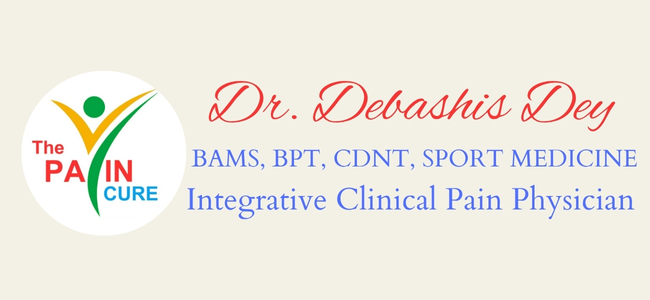Tailbone pain, also called coccydynia, is pain in and around the small triangular bone at the very bottom of your spinal column, above the cleft of your buttocks known as the coccyx.

The term coccyx comes from the Greek word for “cuckoo” as it resembles a bird’s beak with the tip pointed down. “Dynia” means “pain,” and so “coccydynia” literally means “pain of the coccyx.” And because the bone corresponds to the location of an animal’s tail, it’s called the tailbone in common terms.

Anatomy of the coccyx:
Your coccyx is made up of three to five fused vertebrae (bones). It lies beneath the sacrum, a bone structure at the base of your spine. Several tendons, muscles and ligaments connect to it.
Both the coccyx and the ischial tuberosities (two bones that make up the bottom of your pelvis) bear your weight when you sit down. Two-thirds of adults have a coccyx that curves a bit instead of pointing straight down, but one that is curved too far is abnormal and, therefore, painful.Tailbone pain (coccydynia) can make everyday tasks uncomfortable at best, and unbearable at worst.

Tailbone pain ranges from a dull ache to a fierce stab. It can last for weeks, months or sometimes longer. There are three types of events that cause tailbone pain:

External Trauma: A bruised, broken or dislocated coccyx caused by a fall.
Internal Trauma: Trauma caused by a difficult childbirth or from sitting on a narrow or hard surface for too long.
Others: Infection, abscess and tumors.
Interestingly, for one-third of those with coccydynia, the cause is unknown. Women are five times more likely than men to develop coccydynia. Adults and adolescents get it more often than children. Obese persons are three times more susceptible than those at the ideal weight according to the BMI (Body Mass Index) scale. You’re also more vulnerable if you lose weight too quickly.

Symptoms:
The symptoms of coccydynia include:
a. Achy or piercing pain in the tailbone.
b. More severe pain when changing from sitting to standing up.
c. More severe pain when sitting for long periods of time.
d. Pain during bowel movements.
